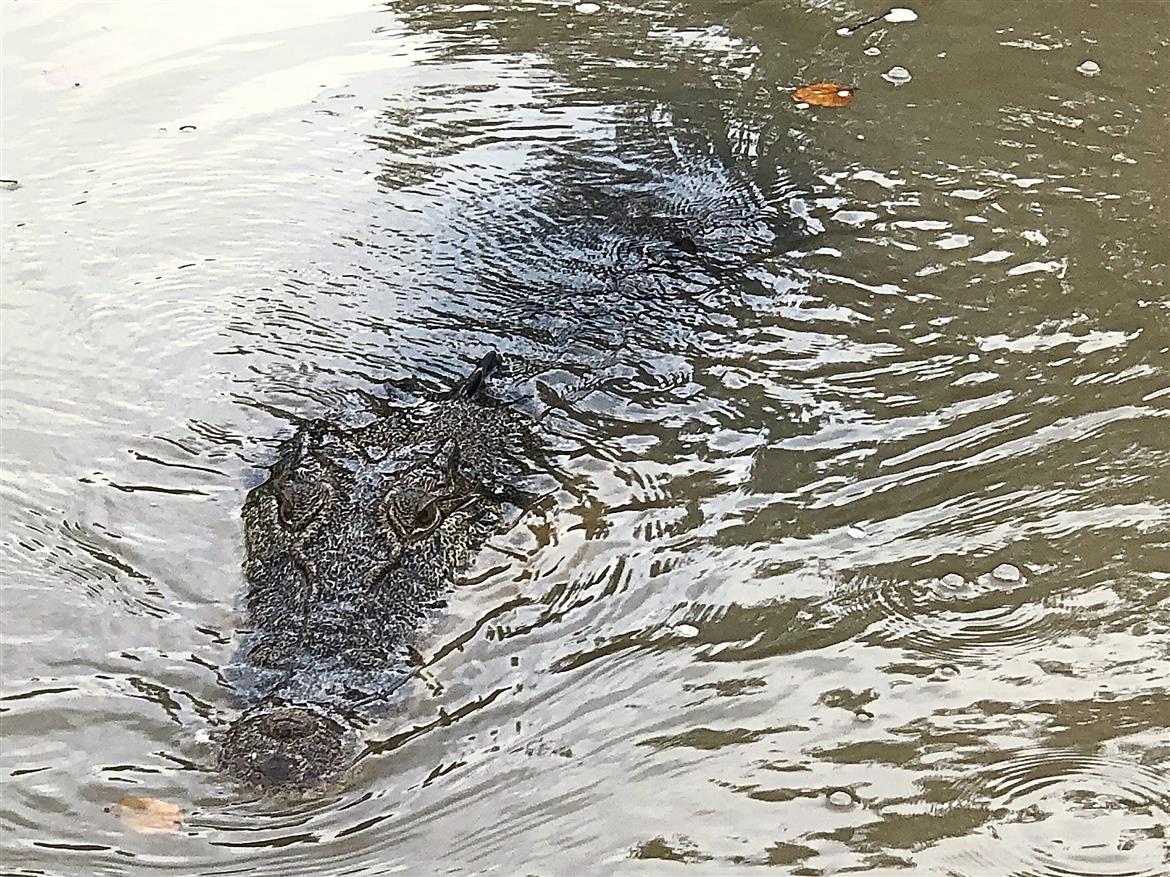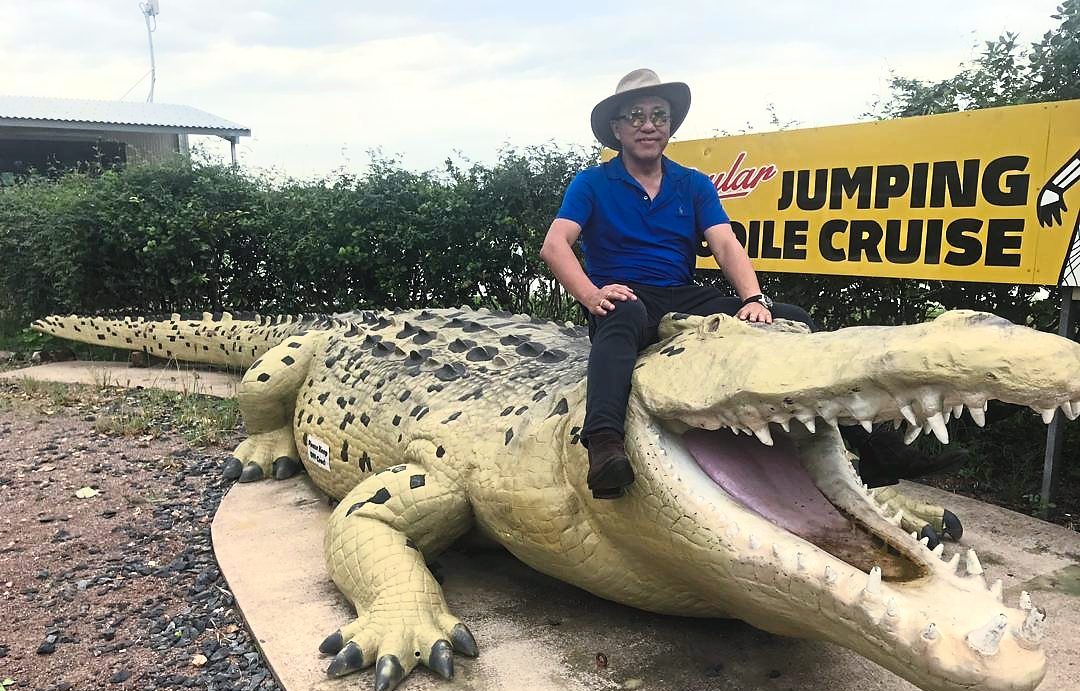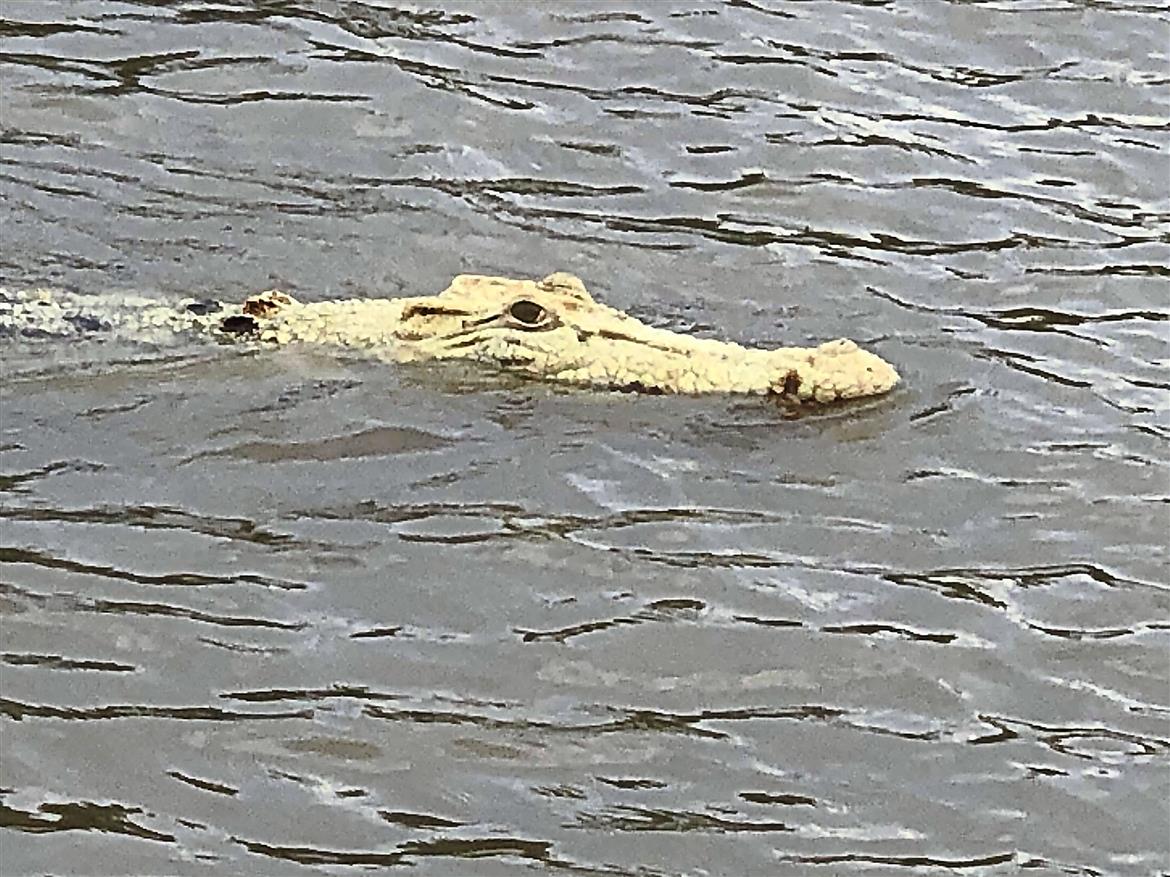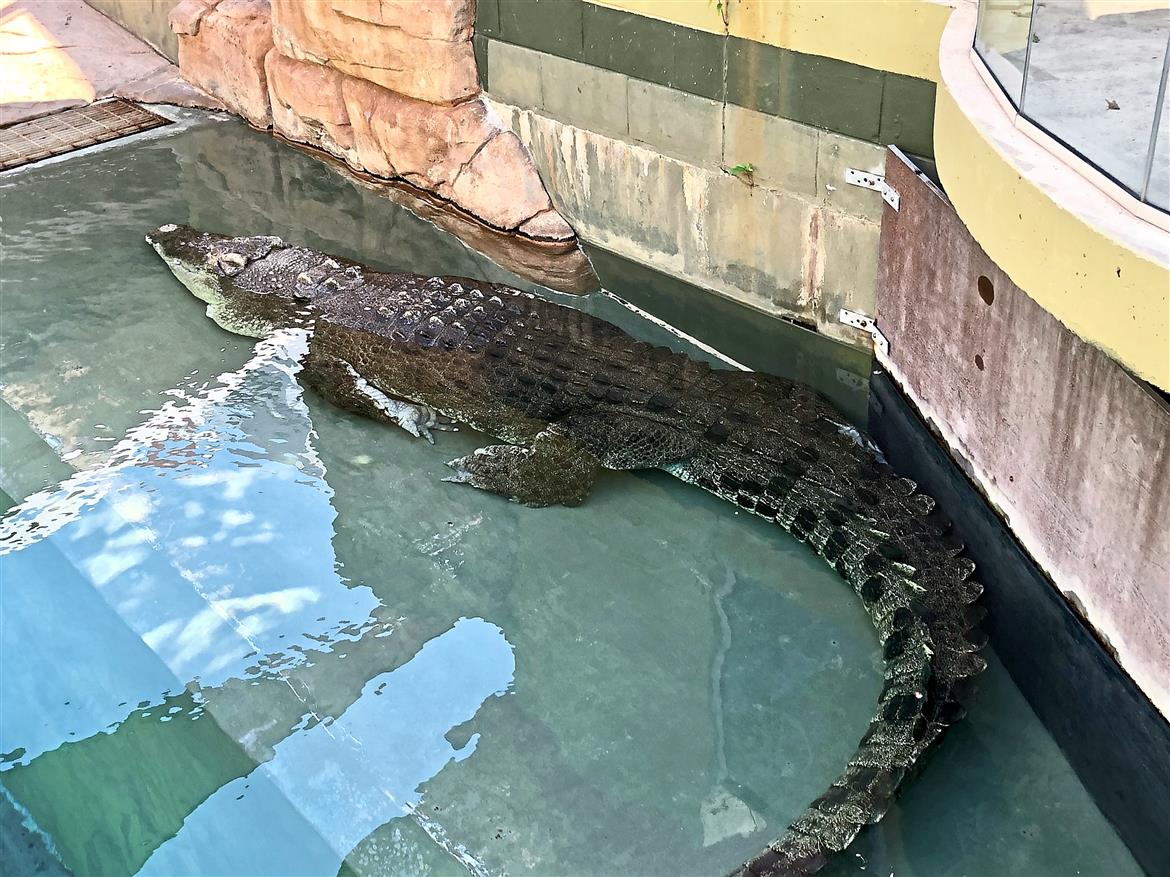The plan began quite simply – I would pay AUD45 (RM132) and join other tourists at the Adelaide River in Darwin, Australia.
Located about 65km east of Darwin, we just need to hop on a cruise boat and look out for crocodiles.
There are more than 200,000 saltwater crocodiles roaming the Northern Territories waterways, and the Adelaide River is one of them.
It was easy to be convinced that the river had plenty of these mean-looking reptiles as I could clearly see a few breaching the river’s surface while I stood waiting by the pier.
Having watched Paul Hogan and the Crocodile Dundee movies from the late 1980s – which were, incidentally, filmed in Darwin – I had read enough to prepare myself for this trip.
The highlight of the cruise was meant to be a show: the boat guide would snag pieces of meat and dangle them from lines held out of the boat to get the crocodiles to jump out of the water, so tourists can capture their perfect pictures.
But I was fairly convinced that these “seasoned” crocodiles were unlikely to be hungry. They probably indulge in these stunts every few hours, or less, since they are familiar with the routine of these tourist boats.
When I asked the guide if there would be any possibility of me catching the famous white croc nicknamed Pearl, she laughed at me.
“I am sorry, mate! You would have to be really very lucky to spot her. I am afraid that’s very unlikely,” she told me, but being the ultimate optimist, I was pretty sure fate had something special in store for me. Nature’s special crocodile had surfaced just four months earlier, and as expected, Pearl made national news.

There are over 200,000 saltwater crocs roaming Australia’s northern territory waterways.
There are over 200,000 saltwater crocs roaming Australia’s northern territory waterways.
It was thought that the albino creature had either died or disappeared having not made an appearance for months. A news report quoted wildlife guide Mike Kieghley as saying that he was “sure that it had met a grisly end”.
According to NT News, Pearl was first spotted in the Adelaide River in November 2017 and some have speculated that it may be related to the infamous crocodile Michael Jackson, a white-headed reptile that also called the Adelaide River home, before he was killed for taking the life of fisherman Lanh Van Tran in 2014.
Both Michael Jackson and Pearl have the leucistic gene, which causes the loss of pigmentation. The colouring deprives them of camouflage, making these animals far more susceptible to attacks in the wild, so some have called for greater protection for Pearl, a report said.
In fact, Pearl has gained international repute with the Daily Mail reporting in September 2017, that “an incredibly rare white crocodile has been spotted in a remote part of Northern Territory” which was “affectionately named Pearl after her lightly coloured scales, the white crocodile has been spotted for the first time in the Adelaide River”.
“Locals have been speculating that Pearl may even be the only one of her kind in Australia,” it reported, adding that it was about 10 years old. Others say it could be 30 to 40 years old.

Wong Chun Wai gets close with a replica of one of the crocodiles captured in Adelaide River.
The BBC was even more dramatic, quoting a witness, a local conservation enthusiast, as estimating the crocodile to be about 3m (10ft) long.
“Everyone is so ecstatic, I spent most of the day in tears watching her,” it quoted the president of an unofficial local conservation group. Even Fox News took a break from reporting about their idol Donald Trump to give Pearl air time.
Last January, it was news in Australia when passengers on a river cruise captured on video a rare white crocodile which swam up to the craft for a snack.
Shai Ager, an ecologist and passenger on the boat said that “tour guides told them” the crocodile’s name is Pearl and she was first spotted in November.
“We saw the white albino crocodile and, as far as I’m aware, it was only seen last November, so a lot of people weren’t sure if it was still alive or not,” Ager told the Australian Broadcasting Corp.
Back to my little adventure, as the boat moved slowly up the river, the guide by now seemed visibly irritated at my knowledge of the “Great White” in the Adelaide River.
I was raising the hopes of the other passengers with tales of this white crocodile, and that must have put the guide in a spot. By then, it was clear that none of these tourists had an inkling to what I was talking about.
Every sighting of the white crocodile has chomped up news space, but what made this Asian middle-aged man so sure he would see one?
But lo and behold, an hour later, even to my astonishment, the white crocodile appeared before our very eyes!

White croc Pearl makes a rare appearance in Adelaide River, Darwin.
None of us, including the guide, could believe our luck, especially me, since I had only recently read up on this beautiful rare animal, which has made news headlines around the world, fascinating even experts at the Smithsonian Institution.
There were more interesting details. According to the Northern Territory Conservation and Protection Society, it reported the crocodile’s discovery and movement as “hanging out in the territory of a large male, which is a good indication it’s a girl. But since crocodiles’ sex organs are difficult to observe, experts would have to conduct an internal exam to be sure”.
Naturally, since Pearl is wild, and no one has ever studied this animal, gender remains a mystery.
The result is that the confused media sometimes refers to Pearl as her, and sometimes him. Pearl has surely kept us guessing.
But there was still one more crocodile to see before I concluded my trip to Darwin. I dutifully visited Burt, the crocodile that became world famous after appearing in Crocodile Dundee.
He is now being kept at the Crocosaurus Cove in Mitchell Street, having been captured in 1981 in Reynolds River after incessantly attacking cattle there. The creature is one mean giant at 5.1m, and he’s over 80 years old.
This monstrous salt water crocodile weighs in at over 700kg, according to a report, and is popularly described as a “confirmed bachelor with one hell of a grumpy attitude”, the park adding that it has failed to find him a mate.
Crocosaurus Cove lists Burt as “our oldest and famous resident” since it has “starred alongside Paul Hogan and Linda Kozlowski in the original Crocodile Dundee movie as well as providing the basis for the digital crocodile in the film Rogue”.

Burt, the reptile in the Crocodile Dundee movie.
The first Crocodile Dundee movie was made in 1986, followed by two sequels: Crocodile Dundee II (1988) and Crocodile Dundee in Los Angeles (2001).
In 2017, Burt was back in the news again, as a seemingly “psychic” crocodile, predicting the winners of World Cup matches.
It has been an incredible journey to Australia. I sat in the coolness of the air-conditioned crocodile park, away from the blazing sun outside, and just watched in awe at Earth’s largest living crocodilian – and, some say, the animal most likely to eat a human – the saltwater or estuarine crocodile.
They are not just any crocodiles but the species where average-size males can reach 17ft (5.1m) and weigh 1,000lbs (450kg), but specimens 23ft (7m) long and weighing 2,200lbs (997kg) are not uncommon.
These saltwater crocs, or “salties”, as Australians affectionately call them, are excellent swimmers and have often been spotted far out at sea.
I set out to meet Burt – the world’s most famous crocodile actor – and ended up with the fantastic bonus of spotting Pearl, one of the most famous white reptiles.





